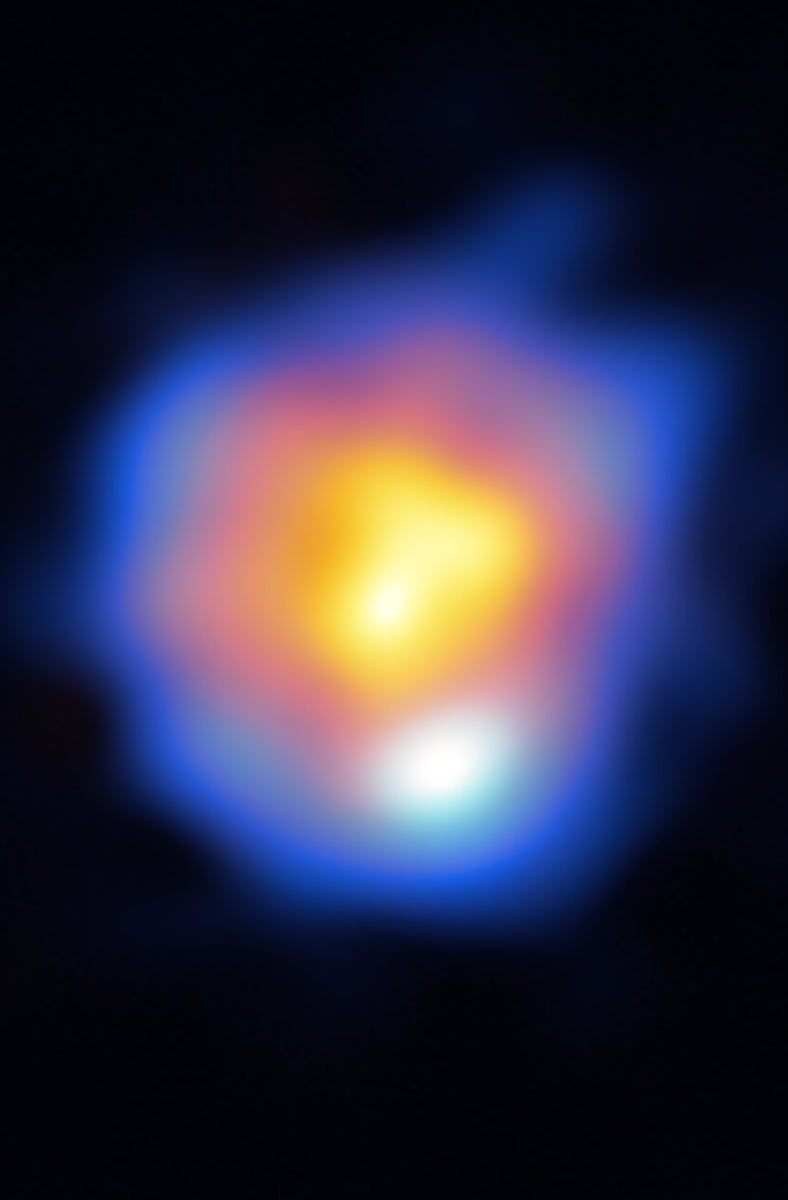This Stunning, High-Resolution Image Reveals The Bizarre Aging Process of Stars
The highest resolution of a star ever taken by ALMA, this image of R Leporis could help us understand the lives of geriatric stars.

This stunning close-up of the red supergiant R Leporis is one of the highest-resolution images of a star (other than our Sun) ever taken. It looks a little blurry, but its actual resolution is roughly the equivalent of seeing a 30-foot-long bus parked on the surface of the Moon.
In this case, we’re glimpsing a star 1,350 light years away, and its all thanks to astronomers at the Atacama Large Millimeter/Submillimeter Array (ALMA) in Chile who captured the image during technical tests in 202. They recently published their work in The Astrophysical Journal.
This is what nearby supergiant star R Leporis, and its halo of gas, would look like if our eyes could see in microwave radiation.
“A Drop of Blood on a Black Field”
The shades of orange in the image are the star’s surface, while the blue haze is radiation from gas around the star. Each shade was chosen to represent a different wavelength of microwave, or submillimeter, radiation: much longer wavelengths than our eyes can see. In visible light, R Leporis appears so intensely red that J.R. Hind, the astronomer who discovered it in 1845, compared the star in his telescope’s field of view to “a drop of blood on a black field.”
R Leporis appears red because of all the carbon soot in its outer layers, thanks to millions of years of fusing helium atoms together to form carbon. The carbon absorbs blue light, but red light – with its longer wavelengths – filters through. And just to make things really interesting, R Leporis also dims and brightens every 14 months, and the dimmer the star gets, the redder it looks.
As R Leporis ages, it’s slowly letting go of its outermost layers, and we can see that happening in the new ALMA image: that’s where the wispy ring of blue gas comes from.
“The observations show that the star is surrounded by a ring-like structure of gas and that gas from the star is escaping to the surrounding space,” explains the European Southern Observatory (ESO) in a recent announcement.
This image compares a previous ALMA image of R Leporis (left) with the new image (right).
Take It to the Limit
To capture R Leporis in such detail, astronomers had to push ALMA to its absolute limits and use a brand-new technique for calibrating the telescope that uses a bright galactic core in the background for comparison.
“In this so-called band-to-band method, atmospheric fluctuations are compensated for by observing a nearby calibrator in low-frequency radio waves,” explains the ESO.
ALMA is actually an array of 66 radio antennas — spread across a high plateau in Chile’s Atacama Desert — all working together to act as one large antenna. This is called an interferometer, and if astronomers need the interferometer to be a different size or shape, all they have to do is load each antenna onto a transport truck and move it into a new position. That’s handy because ALMA’s resolution depends, in part, on the distance between its antennas because more distance means higher resolution. For the close-up of R Leporis, ALMA’s antennas were spaced up to 10 miles apart.
Astronomers can also take higher-resolution images if they’re looking at higher frequencies, so the team pushed ALMA to the upper end of its limit at 950 gigahertz.
The result is this stunning new close-up of R Leporis, which in its multi-hued glory, may help astronomers better understand the lives of geriatric giant stars.
This article was originally published on